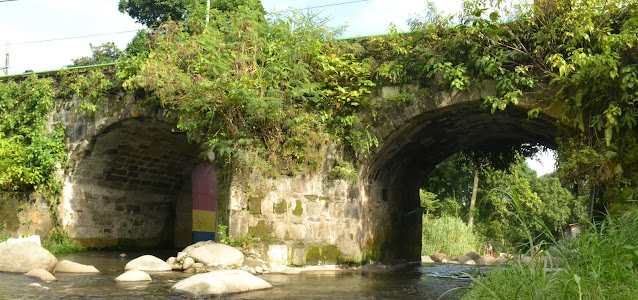If the town of Tayabas was a castle surrounded by a moat, Puente de Alitao would be its drawbridge, connecting it to one of the roads to Lucena. Puente de Alitao spreads low above the Alitao River and was originally built as a wooden bridge in 1798 by Don Jose Medio. In 1823, it was rebuilt as a 253 stone bridge by Don Diego Urbano. Puente de Alitao is a charming structure flanked by a barangay park on one side, and the rushing waters of Alitao on the other side.
Through the years, however, legal battles and population growth have taken their toll on the picturesque environs of the bridge. Informal settlers have constructed their homes at the easement of the riverbanks, a situation that many urbanized and urbanizing localities in the Philippines have to deal with.
Beneath Alitao’s arches, sometimes local women do their laundry amidst the huge boulders that have been brought by the power of water rushing down from Mt. Banahaw. These women (and some men and children) are fortunate to have a continuous supply of free water and to live amidst the beauty of nature. This would not be a big problem if they were able to live in harmony with the environment. Harsh detergents, bleach and other household waste now pollute the once pristine waters of Alitao River, and even if they do not as yet feel the effects, it is quite possible that downstream there are already impacts of these urban (mal)practices.






No comments:
Post a Comment